Global equity markets enter the week with a cautious sense of optimism, fuelled by diplomatic breakthroughs, promising trade developments, and easing geopolitical tensions. After an extended period of market swings and headline overload, recent strides in economic and foreign policy have ushered in a rare moment of relative calm for investors, albeit a potentially short-lived one.
The most prominent catalyst has been renewed confidence from US President Donald Trump, who urged Americans to ‘buy now’ in anticipation of what he dubbed a major economic upswing. He cited progress on a UK-US trade accord and ongoing dialogue with China, suggesting that the US economy is on the brink of a new growth phase. According to the White House, the UK deal alone is projected to unlock $6 billion in tariff revenues and generate $5 billion in fresh export flows, figures used to justify the recent market rally.
While the UK agreement has already been implemented, removing duties on strategic goods such as aluminium and steel, US-China negotiations remain ongoing. Trump referred to last week’s discussions in Switzerland as a potential ‘complete reset,’ aimed at defusing the tariff conflict and expanding US access to Chinese markets. No official breakthrough has been reached, but markets are responding positively to signs that further tariff reductions could be on the table.
Elsewhere, diplomatic progress is lending additional support. A ceasefire between India and Pakistan, though delicate, has helped lower tensions in a traditionally unstable region. Meanwhile, Russia’s renewed push for direct dialogue with Ukraine has revived hopes for movement in the long-standing Eastern European conflict. Despite some early breaches of the ceasefire, traders appear more attuned to the broader diplomatic shift than to short-term instability.
Market Movements This Week
This week’s price action is unfolding under the twin influences of geopolitical easing and central bank vigilance. From commodities and currencies to major indices, traders are sharpening their focus on structural levels and evolving macro narratives. While sentiment has improved in areas, especially amid positive trade developments, markets remain in a transitional phase, neither fully risk-embracing nor entirely defensive.
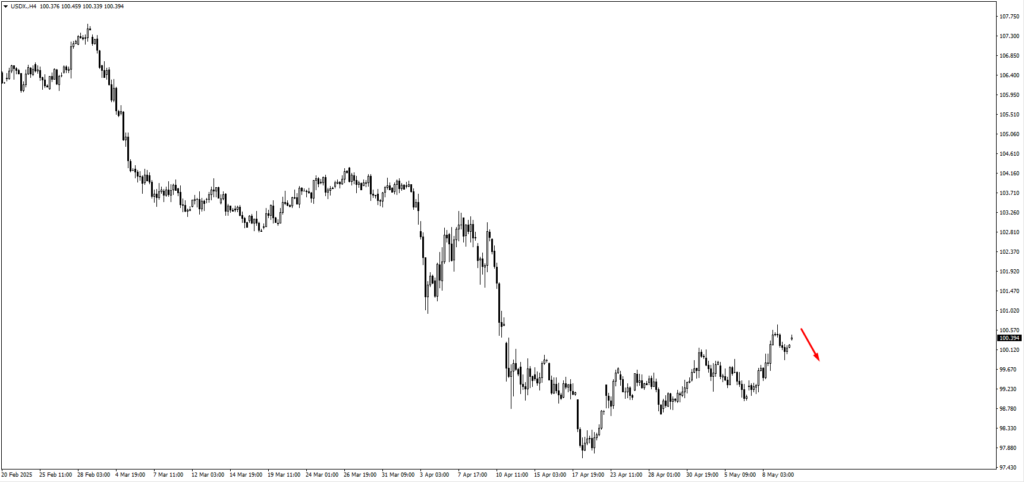
The US Dollar Index (USDX) retreated from the 100.60 resistance zone, ahead of the forthcoming US inflation data. Consumer Price Index (CPI) figures are forecast at 2.4%, with Core CPI anticipated at 2.8%. These data points could prove pivotal in determining whether the dollar’s recent bounce is losing steam. Should the index hover around its current range, a test of the 102.00 level remains possible, though emerging bearish signals could hinder further gains if inflation disappoints.
EUR/USD climbed from the 1.1200 level, signalling mild bullish momentum. A continued hold above this mark may open the path higher, though any dip toward 1.0970 will be closely watched for new long entries. The move reflects both a softer dollar and improved sentiment surrounding EU growth.
GBPUSD reversed its earlier weakness after breaking below the 1.32333 low. The pair has since recovered, though it remains in need of further bullish price action confirmation. Thursday’s UK GDP m/m, forecast at 0.0% versus 0.5% previously, could influence whether this rebound holds or fades. Traders remain cautious, especially with BOE Governor Bailey expected to offer insight on policy direction this week.
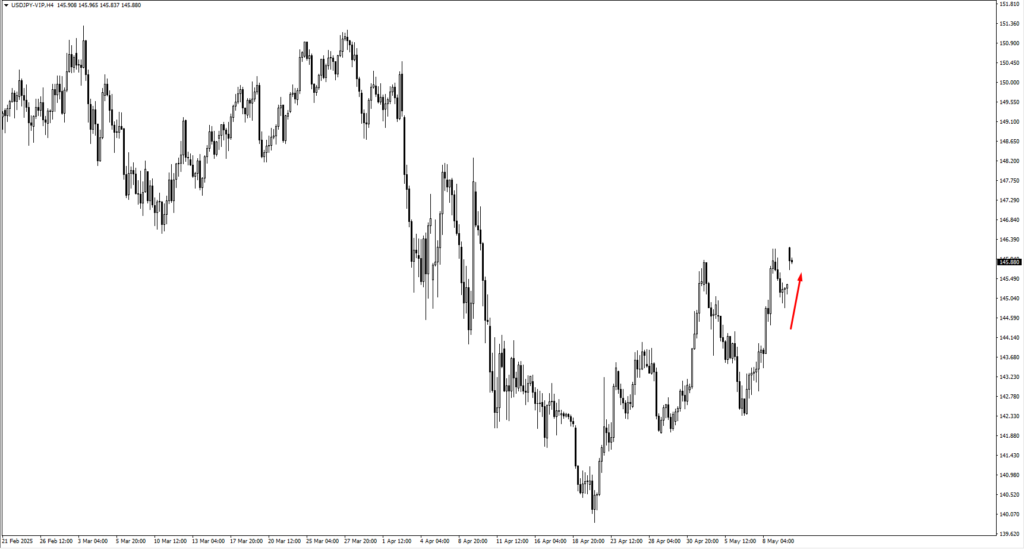
USD/JPY saw a strong upward move toward 146.60 and 147.40, with both levels under scrutiny for signs of exhaustion. With US Treasury yields steady and the Bank of Japan showing no signs of imminent tightening, further gains remain likely unless upcoming inflation figures shift dollar sentiment.
USD/CHF is pushing higher toward 0.8370. A clear break may invite a test of 0.8530, although traders are alert for potential bearish reversals, particularly if geopolitical risk re-emerges and safe-haven flows resume.
AUDUSD rebounded from 0.6380, although the uptrend lacks conviction. Should the pair decline again, traders are eyeing 0.6260 as a key level for bullish price action. The Aussie’s performance this week remains sensitive to Chinese trade headlines and general risk sentiment.
NZDUSD followed a similar trajectory, rising from the 0.5870 region. Like AUDUSD, confirmation is lacking, and a decline would bring the 0.5800 support zone into focus for potential long setups. Commodity-linked currencies may find more direction once U.S. inflation and China trade negotiations provide clearer signals.
USDCAD is trading at the 1.3945 level, and consolidation here could lead to resistance tests at 1.4055 and 1.4140. The Canadian dollar’s strength has been partially anchored by higher oil prices, though oil itself faces resistance in the near term.
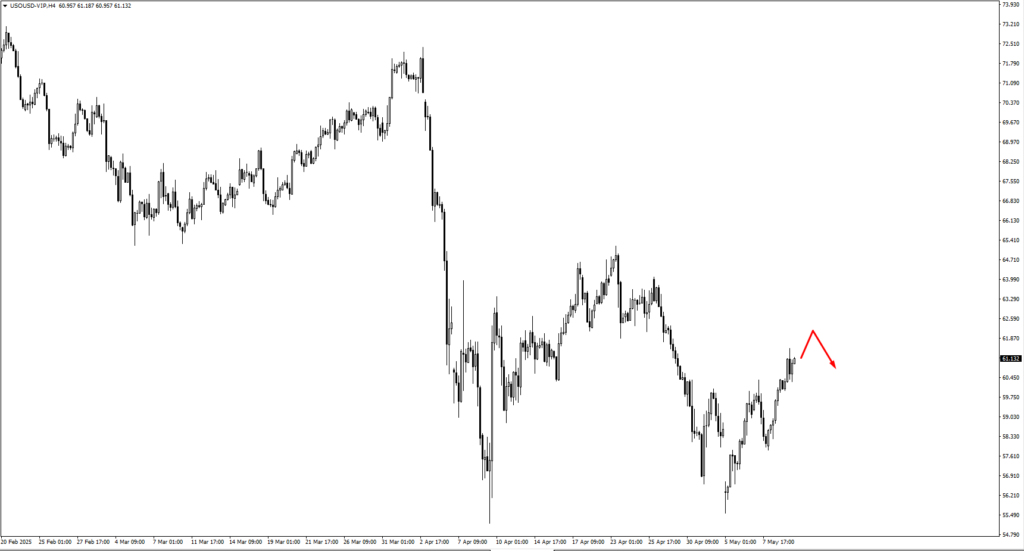
USOIL is edging higher, approaching the 62.05 resistance zone. If momentum carries it further, 63.15 will become a critical level where bearish pressure may build. With ceasefires and diplomatic overtures dampening geopolitical risk premiums, crude’s upside may soon be limited—unless supply disruptions re-enter the narrative.
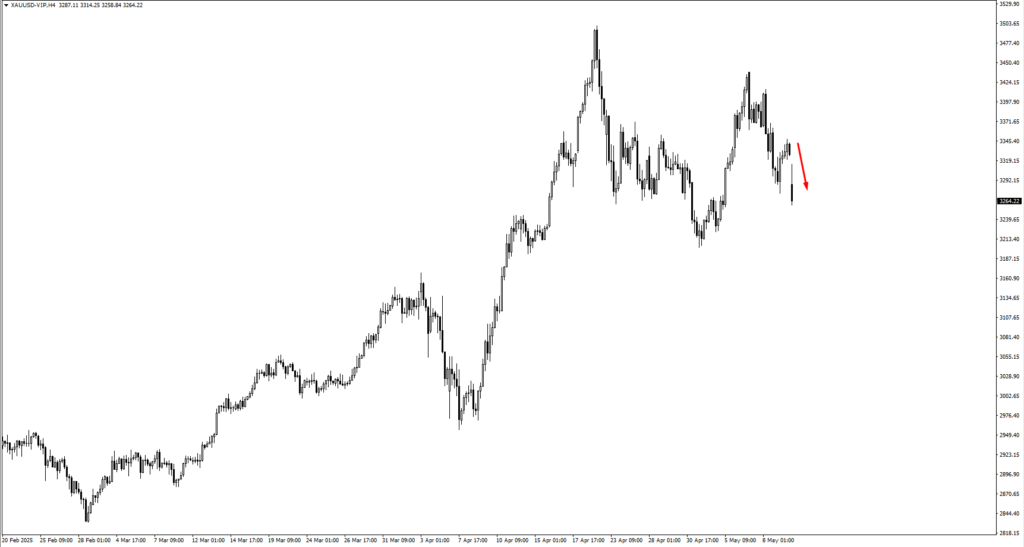
Gold continues to move lower, in line with a cooling inflation outlook. Traders are watching the 3,230 zone for possible support. If gold consolidates there, the 3,120 level becomes the next area of interest. The metal’s bearish bias may remain intact unless U.S. inflation data surprises to the upside or geopolitical risk suddenly resurges.
Silver fell from the 33.20 area and may now test the 31.657 or even 30.95 levels before bulls show renewed interest. Like gold, silver is tracking broader risk appetite and inflation trends, both of which are showing tentative softening.
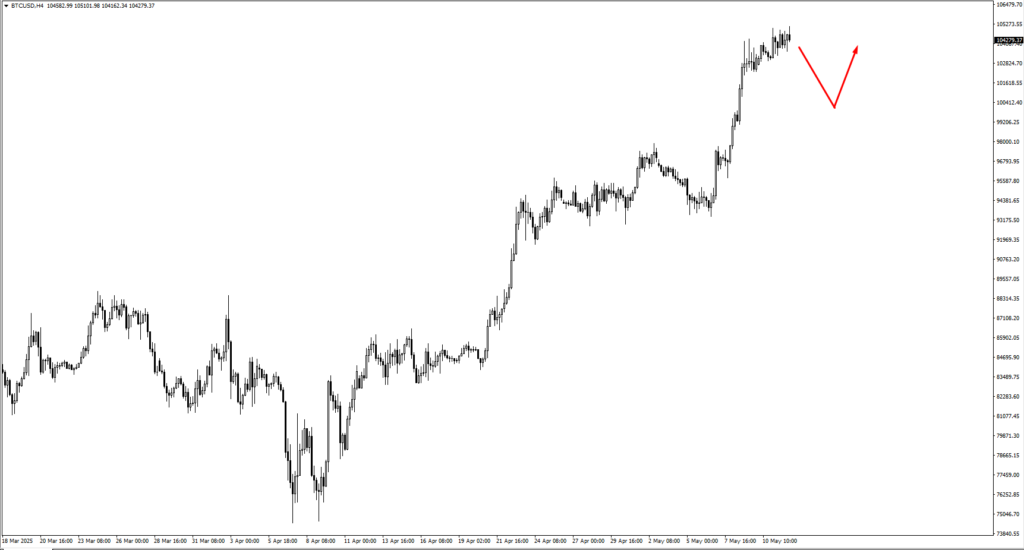
Bitcoin neared its all-time high this week, driven by renewed optimism and positive macro developments. If the rally pauses to consolidate, traders will monitor the 99,600 zone for fresh bullish patterns. Ether outpaced Bitcoin with an 18.91% rise across Friday and Saturday, having broken above 1,900. The next levels in focus for ETH are 2,340 and 2,780, depending on momentum and investor appetite.
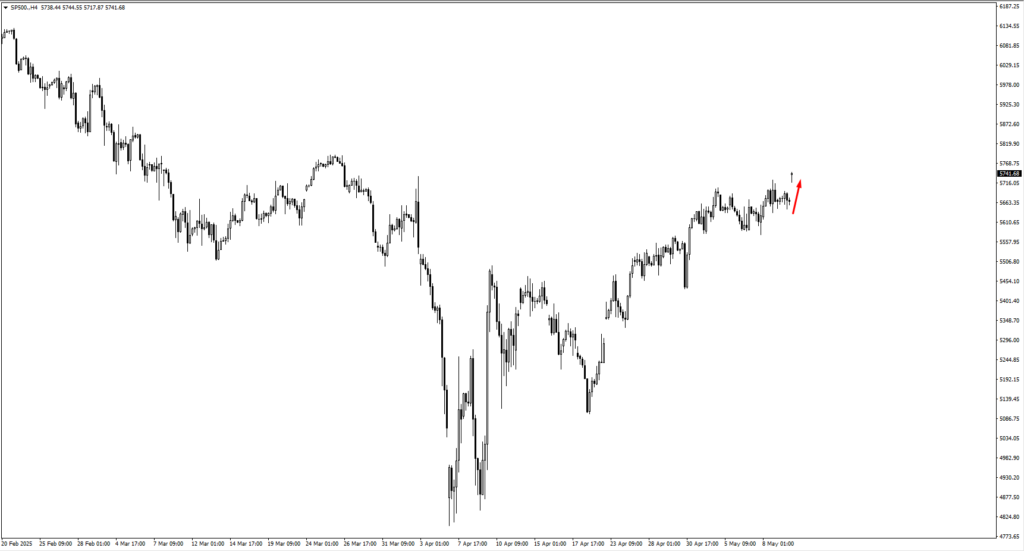
The S&P 500 continued its climb, with upcoming price action zones at 5,775 and 5,830. These levels represent potential resistance areas where the index may stall or break higher, contingent on this week’s inflation figures and Fed Chair Powell’s Thursday remarks. Nasdaq followed suit, now within range of 20,560 and 21,230, where traders will be seeking signs of fatigue or breakout.
Natural Gas made a new swing high and is now likely to consolidate. A pullback to 3.50 may offer bullish re-entry opportunities. Market participants continue to assess seasonal demand alongside broader commodity flows.
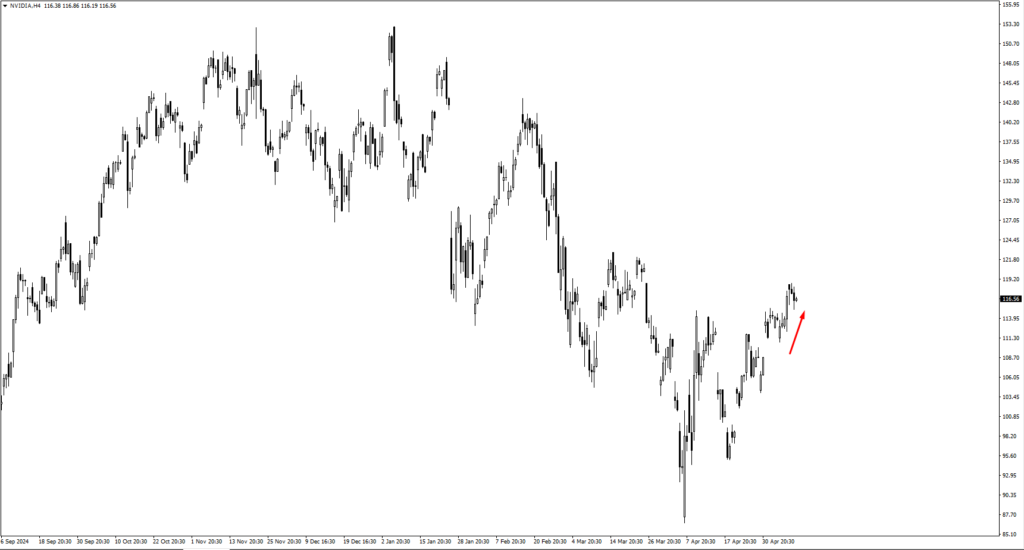
Nvidia remains on track toward the 120.40 level. With its intrinsic value estimated at $130, traders are tracking its movements closely. Amazon is similarly advancing, heading for 195.80, while Microsoft remains poised to break through 448.30 and potentially 456.03, contingent on consolidation patterns.
Across the board, price action this week reflects a market walking the line between optimism and uncertainty. With key inflation data and central bank speeches on the docket, these structural zones will guide short-term momentum, while traders wait for confirmation that calm abroad and cooling inflation at home can form the basis of a steadier risk-on trend.
Key Events This Week
On Tuesday, May 13, the focus turns sharply to inflation and monetary policy, with the US and UK releasing market-relevant updates. In the US, CPI y/y is forecast to remain unchanged at 2.4%, while Core CPI y/y, which excludes food and energy, is expected to come in lower than the previous 2.8%. Markets are watching closely for any sign that inflation is cooling faster than expected, which could reinforce hopes for a shift in Federal Reserve policy later in the year. On the same day, Bank of England Governor Andrew Bailey is scheduled to speak. With the UK economy treading water and inflation coming down, traders will be parsing Bailey’s comments for guidance on future interest rate decisions. Sterling pairs could react sharply if his tone diverges from expectations, especially with Thursday’s GDP figures looming.
On Thursday, May 15, a trio of high-impact events takes centre stage. In the UK, GDP m/m is forecast at 0.0%, down from the previous month’s 0.5%. A flat growth reading would add weight to concerns about the UK’s post-Brexit economic momentum and could weaken the pound if paired with dovish signals from Governor Bailey earlier in the week. Across the Atlantic, the US is due to release PPI m/m data, forecast to rise by 0.2% following last month’s -0.4% drop. A stronger PPI print would suggest rising production costs, possibly hinting at future consumer inflation pressure and complicating the Fed’s outlook. Later in the day, Federal Reserve Chair Jerome Powell is expected to speak. With inflation data in hand and markets already pricing in slower growth ahead, his words could sway expectations sharply. A cautious tone may support equities and weigh on the dollar, while a firmer stance could reassert the Fed’s commitment to keeping rates elevated for longer.
The week ahead offers fewer distractions from global diplomacy, but sharper scrutiny on economic direction. As traders weigh inflation data against central bank rhetoric, positioning will hinge on whether macro signals support the easing narrative—or suggest that policy tightening may still have work to do.







